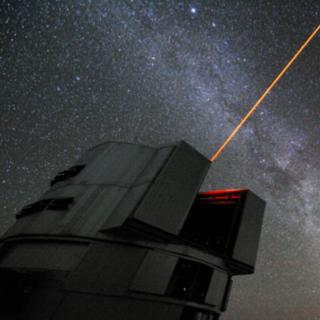Bibcode
Pota, V.; Brodie, Jean P.; Bridges, Terry; Strader, Jay; Romanowsky, Aaron J.; Villaume, Alexa; Jennings, Zach; Faifer, Favio R.; Pastorello, Nicola; Forbes, Duncan A.; Campbell, Ainsley; Usher, Christopher; Foster, Caroline; Spitler, Lee R.; Caldwell, Nelson; Forte, Juan C.; Norris, Mark A.; Zepf, Stephen E.; Beasley, M. A.; Gebhardt, Karl; Hanes, David A.; Sharples, Ray M.; Arnold, Jacob A.
Referencia bibliográfica
Monthly Notices of the Royal Astronomical Society, Volume 450, Issue 2, p.1962-1983
Fecha de publicación:
6
2015
Número de citas
23
Número de citas referidas
21
Descripción
We present new wide-field photometry and spectroscopy of the globular
clusters (GCs) around NGC 4649 (M60), the third brightest galaxy in the
Virgo cluster. Imaging of NGC 4649 was assembled from a recently
obtained Hubble Space Telescope/Advanced Camera for Surveys mosaic, and
new Subaru/Suprime-Cam and archival Canada-France-Hawaii
Telescope/MegaCam data. About 1200 sources were followed up
spectroscopically using combined observations from three multi-object
spectrographs: Keck/Deep Imaging Multi-Object Spectrograph,
Gemini/Gemini Multi-Object Spectrograph and Multiple Mirror
Telescope/Hectospec. We confirm 431 unique GCs belonging to NGC 4649, a
factor of 3.5 larger than previous data sets and with a factor of 3
improvement in velocity precision. We confirm significant GC colour
bimodality and find that the red GCs are more centrally concentrated,
while the blue GCs are more spatially extended. We infer negative GC
colour gradients in the innermost 20 kpc and flat gradients out to large
radii. Rotation is detected along the galaxy major axis for all tracers:
blue GCs, red GCs, galaxy stars and planetary nebulae. We compare the
observed properties of NGC 4649 with galaxy formation models. We find
that formation via a major merger between two gas-poor galaxies,
followed by satellite accretion, can consistently reproduce the
observations of NGC 4649 at different radii. We find no strong evidence
to support an interaction between NGC 4649 and the neighbouring spiral
galaxy NGC 4647. We identify interesting GC kinematic features in our
data, such as counter-rotating subgroups and bumpy kinematic profiles,
which encode more clues about the formation history of NGC 4649.
Proyectos relacionados

Evolución Galáctica en el Grupo Local
La formación y evolución de galaxias es un problema fundamental en Astrofísica. Su estudio requiere “viajar atrás en el tiempo”, para lo cual hay dos enfoques complementarios. El mas extendido consiste en analizar las propiedades de las galaxias a diferentes distancias cosmológicas. Nuestro equipo se concentra en el otro enfoque, denominado
Emma
Fernández Alvar

Huellas de la Formación de las Galaxias: Poblaciones estelares, Dinámica y Morfología
Bienvenida a la página web del g rupo de investigación Traces of Galaxy Formation. Somos un grupo de investigación amplio, diverso y muy activo cuyo objetivo principal es entender la formación de galaxias en el Universo de una manera lo más completa posible. Con el estudio detellado de las poblaciones estelares como bandera, estamos constantemente
Anna
Ferré Mateu